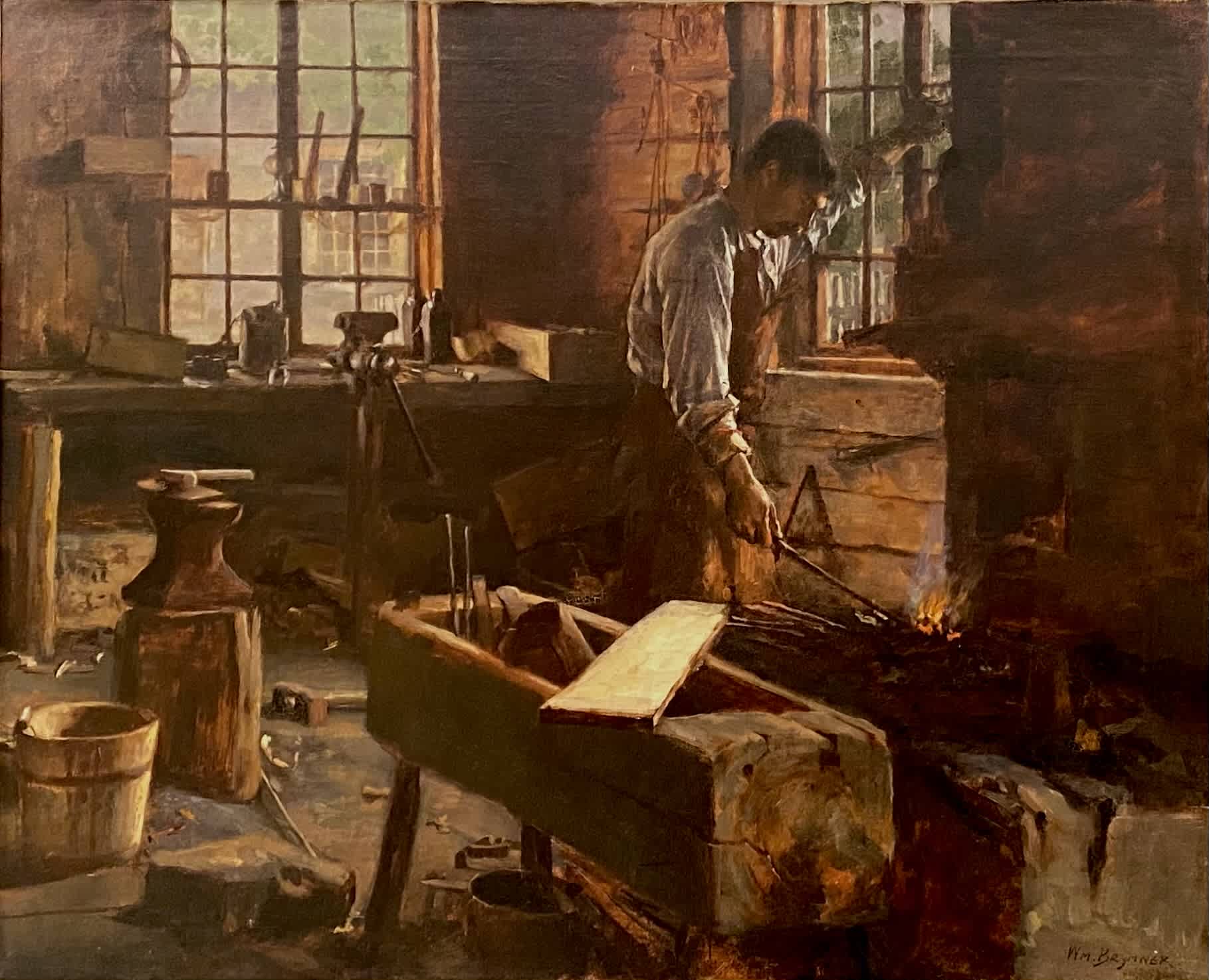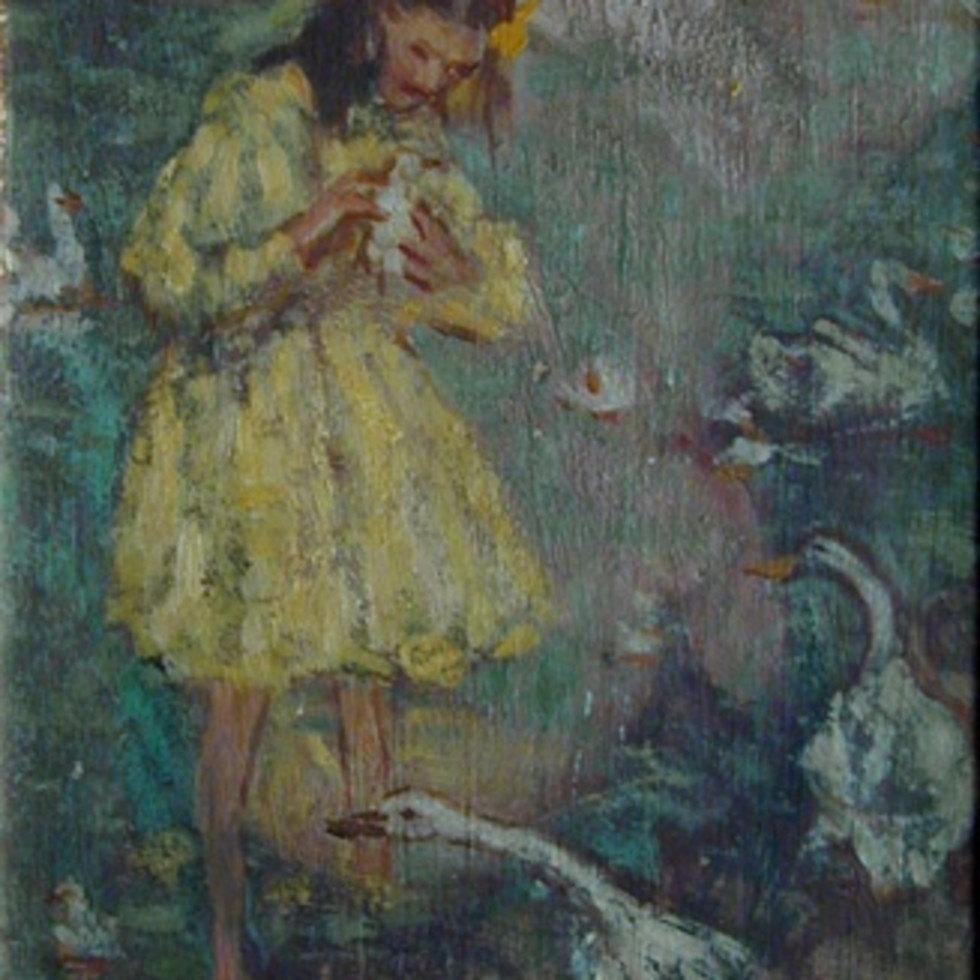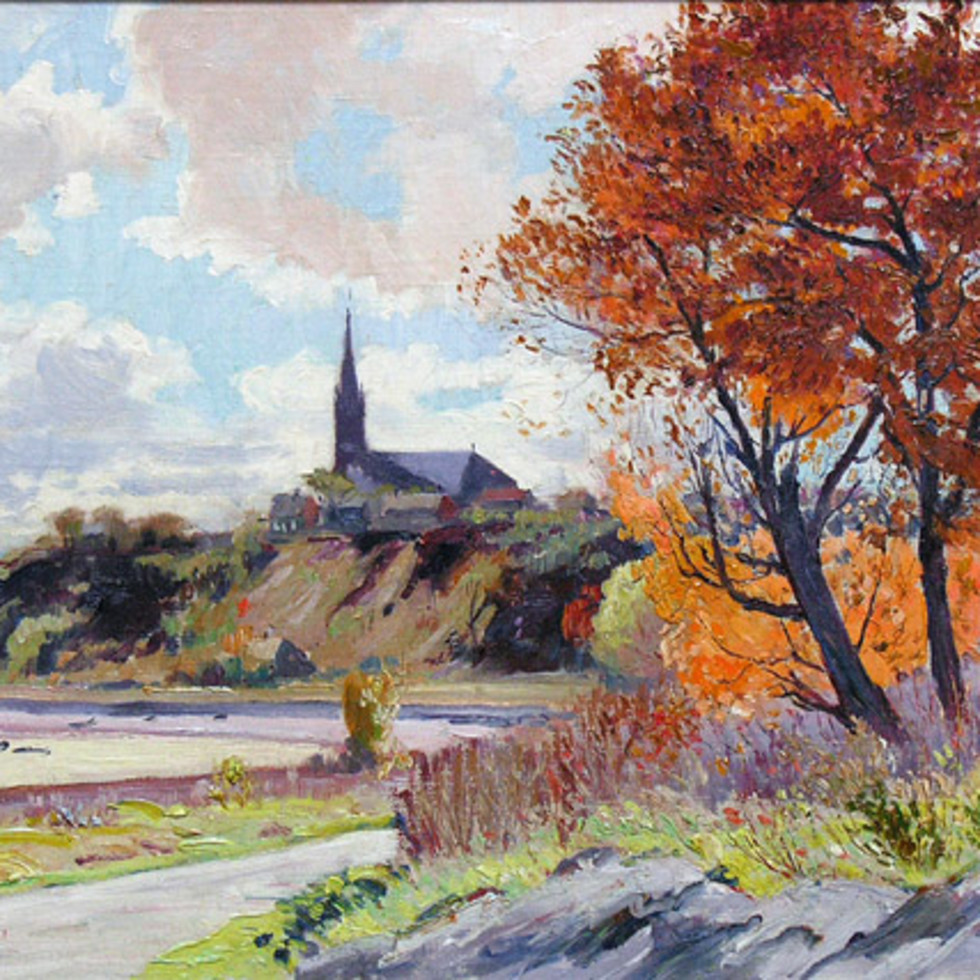Notable Sales
The Smithy, 1889 (circa)
66 x 81.3 cm
Inscriptions
signed, ‘Wm. Brymner’ (lower left)Provenance
Charles Ross Whitehead, Trois-Rivières, Montreal, Hudson, Québec;
Bequeathed to Lois Whitehead (née Lois Scarth Nicholson);
By descent to the present owner, Ontario, circa 1975.
Exhibitions
Ottawa, National Gallery of Canada, Royal Canadian Academy Of Arts, Mar 15 -30, 1889, no. 32,
Montreal, Art Association of Montreal, Annual Spring Exhibition, April 12 - May 4, 1889, no. 9,
Montreal, Art Association of Montreal, Memorial exhibition of paintings by the Late William Brymner, C.M.G., R.C.A., Jan 20 - Feb 14, 1926.Publications
National Gallery of Canada, Royal Canadian Academy Of Arts, Mar 15 -30, 1889, no. 32.
Montreal, Art Association of Montreal, Annual Spring Exhibition, April 12 - May 4, 1889, no. 9,
Montreal, Art Association of Montreal, Memorial exhibition of paintings by the Late William Brymner, C.M.G., R.C.A., Jan 20 - Feb 14, 1926, 6p. (brochure), p.3.This painting is probably the work exhibited at the Art Association of Montreal and the Royal Canadian Academy of the Arts shows in 1889 under the title Smithy.
In the Quebec context, the importance of the local blacksmith cannot be overestimated. His work was one learned through an apprenticeship over a few years.
See https://www.thecanadianencyclopedia.ca/fr/article/forge-ouvrage-de.
The objects he made were from decorative hardware to large-scale iron works for the farmers, and he would also shoe horses. Occasionally the blacksmith was an intermediary in the selling of horses. His shop sometimes provided a place for men to get together. The blacksmith was sometimes paid for his services with the produce his clients cultivated. That of course implies that the blacksmith shop was also a place where goods were resold by him. The blacksmith’s responsibilities in the villages of 19th century Quebec were numerous, and sometimes included even preparing the horse-drawn funeral cortège and harnessing up his horses to lead it.













